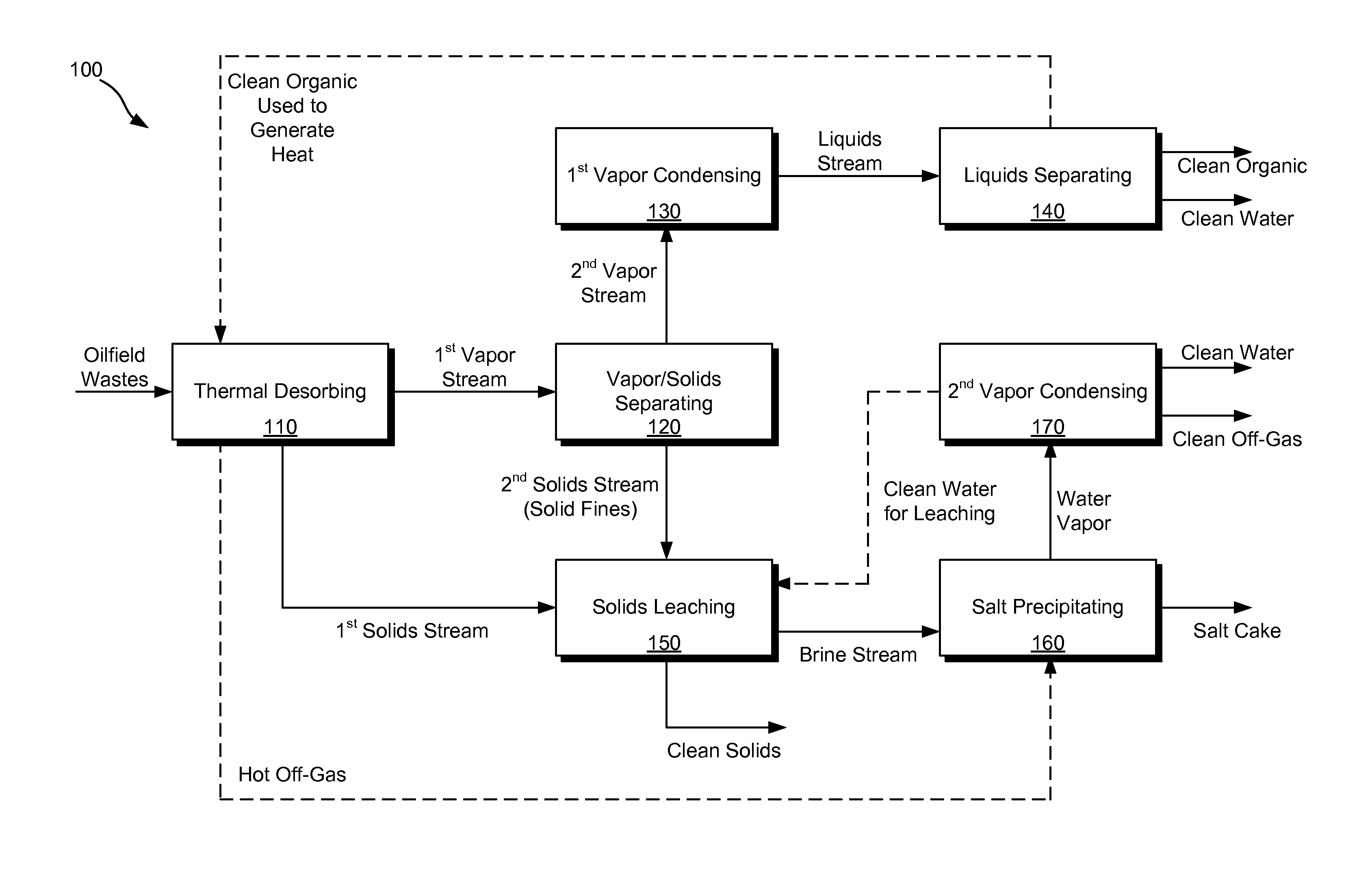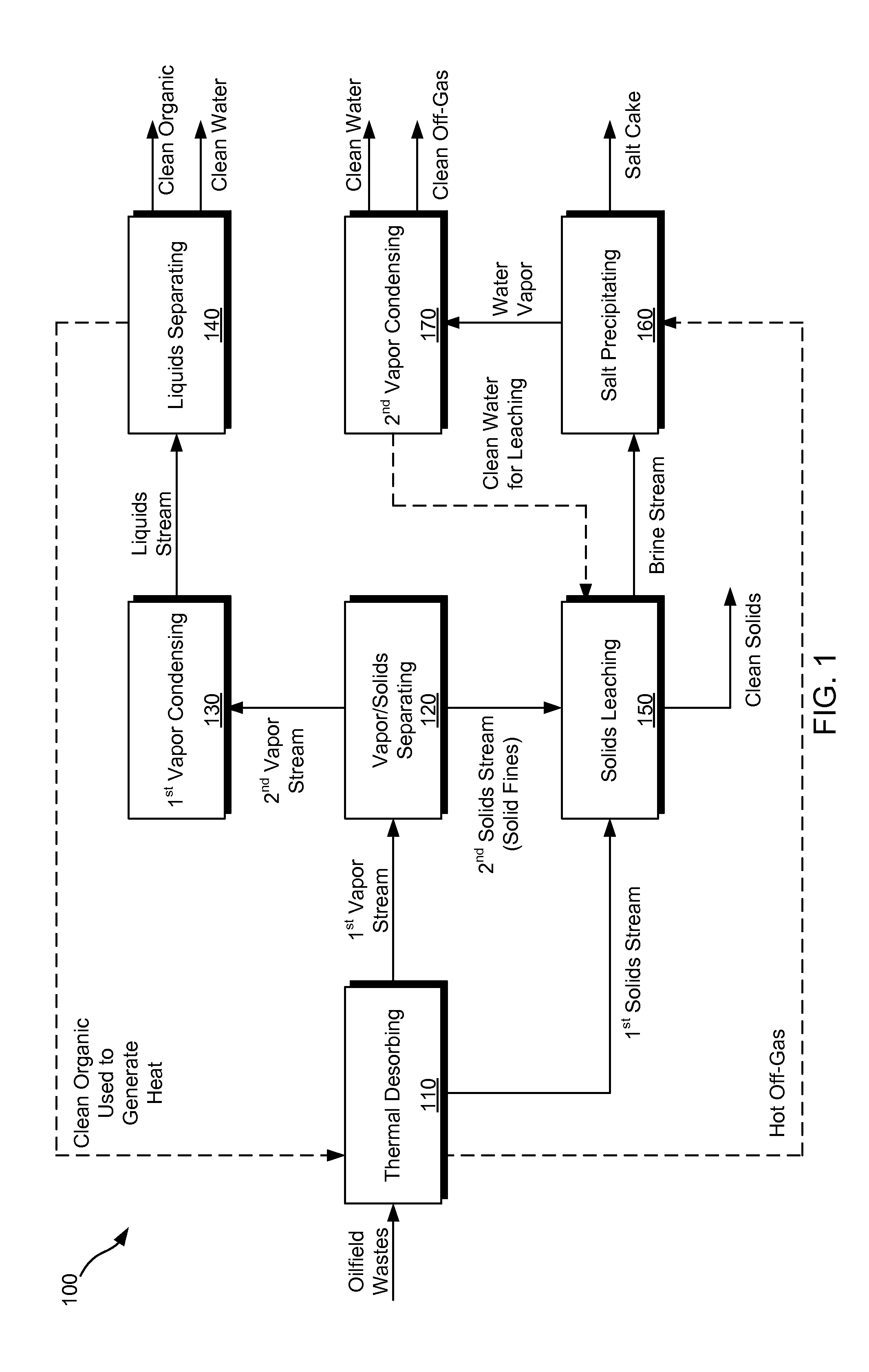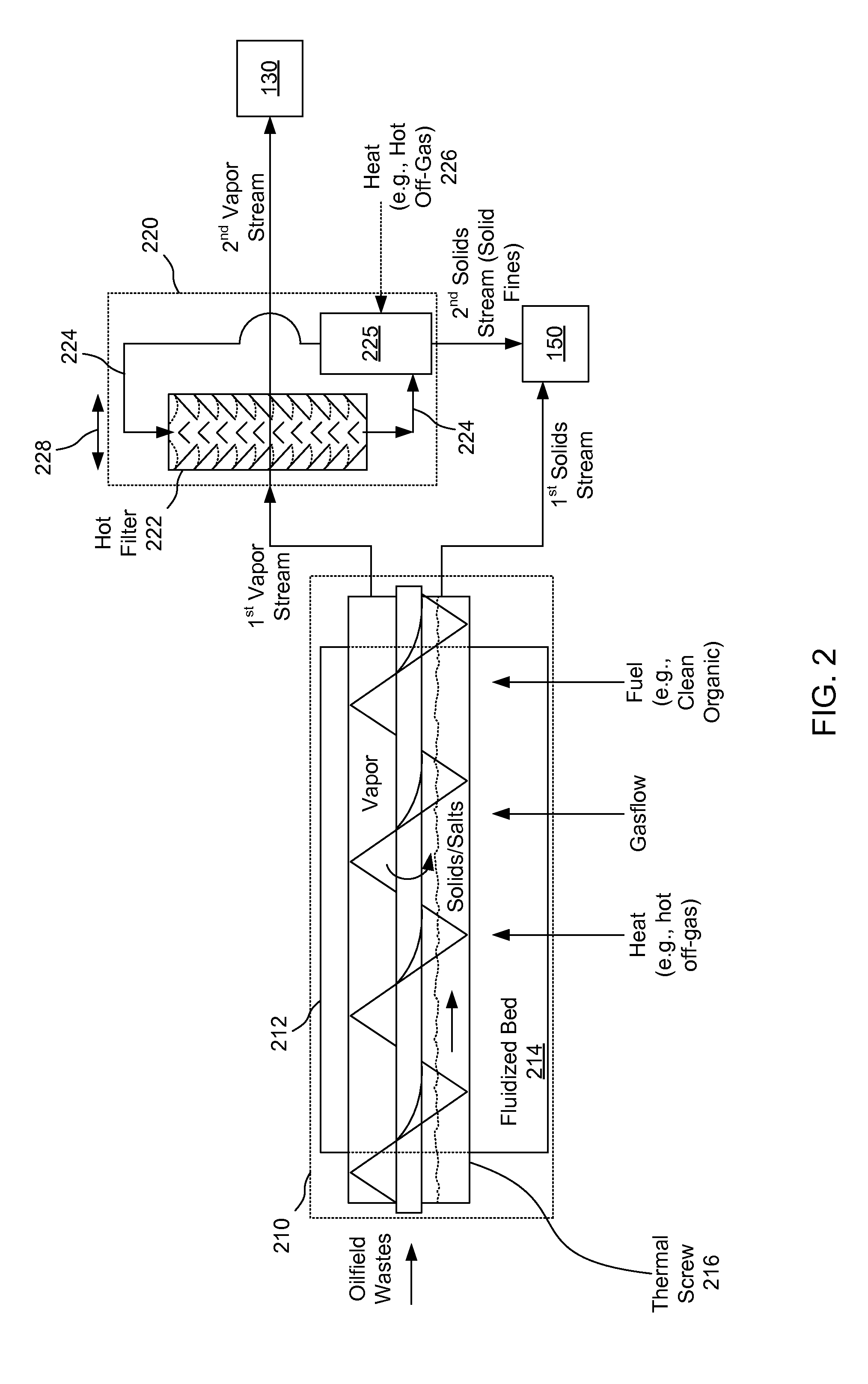Process for separation and recovery of cuttings, emulsion and slurry components
- Summary
- Abstract
- Description
- Claims
- Application Information
AI Technical Summary
Benefits of technology
Problems solved by technology
Method used
Image
Examples
Embodiment Construction
[0016]To realize the aforementioned benefits and to overcome the disadvantages of existing technologies, Applicant has developed on-site systems, methods, and apparatus for separating and recovering major components of oilfield wastes. Such solutions are particularly applicable to oil / water emulsions having solid fines in them, since such waste emulsions are typically intractable for traditional treatment systems. The systems, methods, and apparatus of this disclosure are even applicable to waste feeds comprising an emulsion of organics (e.g., hydrocarbons) and water having a greater viscosity than the two phases in isolation, and solid fines having a specific gravity approaching that of the organics and water, this waste feed is intractable for traditional treatment methods.
[0017]The inventor first applied thermal desorption to the oilfield wastes, which was a novel approach in and of itself, only to find that the supposed ‘treated’ vapors were filled with solid fines, and once the...
PUM
 Login to View More
Login to View More Abstract
Description
Claims
Application Information
 Login to View More
Login to View More - R&D
- Intellectual Property
- Life Sciences
- Materials
- Tech Scout
- Unparalleled Data Quality
- Higher Quality Content
- 60% Fewer Hallucinations
Browse by: Latest US Patents, China's latest patents, Technical Efficacy Thesaurus, Application Domain, Technology Topic, Popular Technical Reports.
© 2025 PatSnap. All rights reserved.Legal|Privacy policy|Modern Slavery Act Transparency Statement|Sitemap|About US| Contact US: help@patsnap.com



